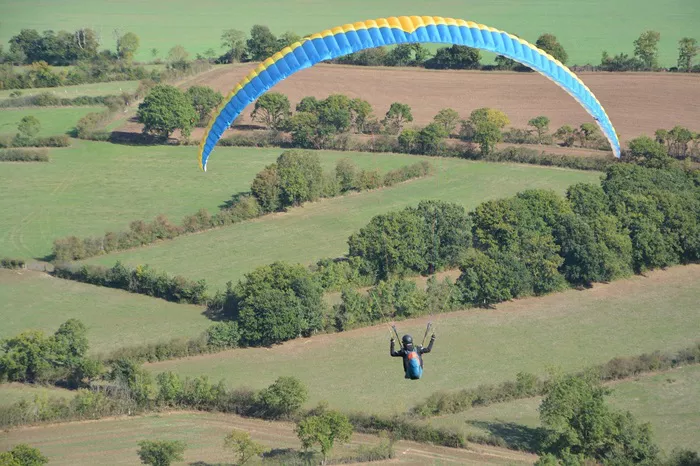Paragliding, with its exhilarating blend of freedom and adventure, attracts people from all walks of life. This article explores who can engage in this thrilling sport, detailing the prerequisites, physical and mental requirements, and considerations to ensure a safe and enjoyable experience. Whether you’re a potential pilot or just curious, this guide will help you understand the essential criteria for paragliding.
Understanding Paragliding: The Basics
Paragliding is a form of free-flight where the pilot uses a fabric wing to soar through the air. Unlike traditional aviation, paragliding does not require a runway or a large aircraft. Instead, it relies on the pilot’s skill and the natural elements—wind, thermal currents, and weather conditions.
The Appeal of Paragliding
The sport’s appeal lies in its simplicity and the unique perspective it offers. With minimal equipment and training, individuals can experience the thrill of flying. Paragliding offers a serene escape from everyday life and a chance to see the world from above, providing a sense of freedom that is hard to match.
Who Can Participate in Paragliding?
Age Requirements
Minimum Age: Most paragliding schools and organizations set a minimum age requirement of 16. This age is chosen to ensure that participants have the maturity and physical coordination required for the sport.
Maximum Age: There is no strict upper age limit for paragliding. Many enthusiasts continue to fly well into their senior years, as long as they maintain good health and physical fitness.
Physical Fitness
General Health: Paragliding demands a reasonable level of physical fitness. Pilots need to be able to run short distances, manage their equipment, and handle the physical sensations of flying. Individuals with pre-existing health conditions or serious physical limitations should consult a medical professional before attempting the sport.
Strength and Stamina: While not extremely demanding, paragliding does require some physical strength and stamina. Pilots must be able to lift and carry the wing, launch from the ground, and manage the landing.
Mental Preparedness
Fear of Heights: A basic comfort with heights is crucial. Pilots should not experience significant anxiety when flying. Overcoming a fear of heights is possible with proper training and gradual exposure.
Decision-Making Skills: Paragliding requires quick decision-making and the ability to remain calm under pressure. Pilots must make instant choices based on changing weather conditions and flight dynamics.
see also: Can You Do Paragliding In Winter?
Training and Certification
Professional Training: To ensure safety and skill proficiency, aspiring pilots must undergo training with a certified instructor. Most countries require completion of a training course and certification before flying solo.
Certification Levels: Certification levels vary by country but generally include beginner, intermediate, and advanced stages. Each level represents different skills and experiences, with advanced certifications allowing for more complex flights and maneuvers.
Equipment and Gear Requirements
Essential Gear
Wing: The most critical piece of equipment is the paraglider wing, which comes in various sizes and designs depending on the pilot’s weight and experience level.
Harness: The harness connects the pilot to the wing and provides support during flight. It should be comfortable and well-fitted.
Helmet and Parachute: Safety gear includes a helmet to protect the head and a reserve parachute as a backup in case of emergency.
Personal Considerations
Weight Limits: Each paraglider wing has a specific weight range. Pilots must choose equipment that matches their weight, including any gear they carry.
Weather Conditions: Paragliding is weather-dependent. Pilots need to be able to interpret weather forecasts and understand how different conditions affect their flight.
Legal and Regulatory Considerations
Licensing and Regulations
Local Regulations: Different countries and regions have varying regulations regarding paragliding. It’s essential to be aware of and comply with local laws, including licensing requirements and airspace restrictions.
Insurance: While not always mandatory, having insurance for paragliding is highly recommended. It covers potential accidents and damages that may occur during the sport.
Safety Practices and Risk Management
Safety Training
Pre-Flight Checks: Conducting thorough pre-flight checks is vital to ensure equipment is in good condition and ready for use.
Emergency Procedures: Pilots should be familiar with emergency procedures, including how to use the reserve parachute and respond to in-flight issues.
Risk Management
Understanding Risks: Paragliding involves inherent risks, such as changes in weather, equipment failure, or human error. Proper training and adherence to safety protocols significantly mitigate these risks.
Continuous Learning: Experienced pilots continually update their skills and knowledge to adapt to new techniques and safety practices.
Summary
Paragliding is an accessible and thrilling sport for many individuals, provided they meet certain criteria and are prepared for the challenges it presents. By ensuring adequate training, maintaining physical and mental fitness, and adhering to safety practices, enthusiasts can enjoy the freedom of flight and the unique perspective it offers.
FAQs:
What is the minimum age for paragliding?
The minimum age for paragliding is typically 16 years old, although some locations may have different requirements.
Do you need to be physically fit to paraglide?
Yes, a reasonable level of physical fitness is necessary. Pilots should be able to handle their equipment and manage the physical aspects of launching and landing.
Is there an upper age limit for paragliding?
There is no strict upper age limit for paragliding. As long as individuals are in good health and physically fit, they can participate at any age.
What type of training is required for paragliding?
Aspiring pilots must complete a training course with a certified instructor, covering basic and advanced skills as required. Certification is often needed before flying solo.
Do I need insurance for paragliding?
While not always mandatory, having insurance is highly recommended to cover potential accidents and damages.
By understanding these key points and preparing accordingly, anyone interested in paragliding can take to the skies with confidence and excitement.
related topics:
- What Is The Chance Of Injury Paragliding?
- What Is Paragliding Sport?
- How Much Does It Cost To Start Paragliding?

